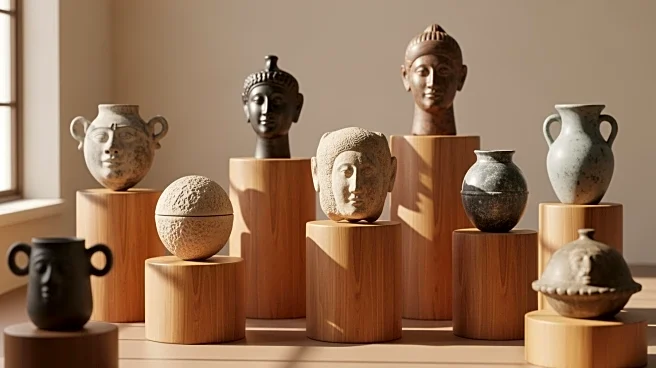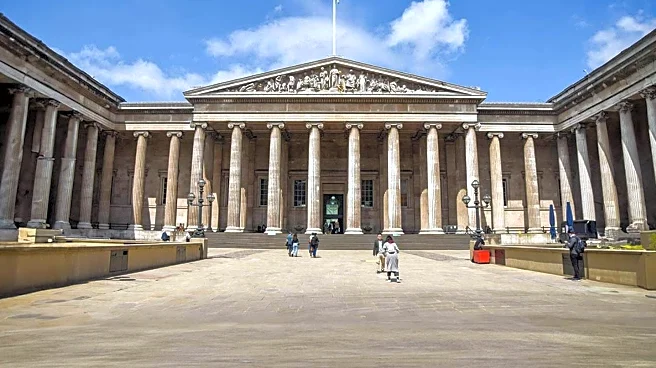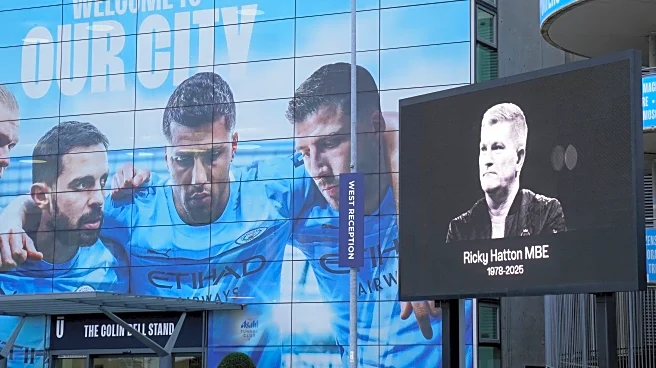What's Happening?
The British Museum has launched an initiative to bring artefacts into classrooms across England, allowing primary school students to engage with historical treasures outside the traditional museum setting. This program, part of the National Programmes
partner organisation, involves taking items like a 3,500-year-old canopic jar to schools, where they become focal points for exhibitions and history lessons. The initiative aims to make museum learning more accessible and interactive, using technology and workshops to enhance educational experiences.
Why It's Important?
This initiative represents a significant shift in museum education, emphasizing accessibility and engagement. By bringing artefacts directly to students, the British Museum is democratizing access to cultural heritage, potentially inspiring a new generation of history enthusiasts. The program supports the UK national curriculum, providing valuable resources for teachers and enriching students' understanding of history. It also highlights the role of museums in public education and their potential to reach diverse audiences beyond traditional visitors.
What's Next?
The British Museum plans to expand its outreach efforts, incorporating more digital resources and virtual visits to reach schools unable to visit in person. This expansion may lead to increased collaboration with educational institutions and the development of new learning materials. As the museum embarks on its masterplan for cultural redevelopment, it will review and adapt its learning programs to align with evolving educational needs and curriculum changes.
Beyond the Headlines
The initiative raises important questions about the role of museums in addressing sensitive historical topics, such as empire and slavery. By engaging with these issues, the British Museum is contributing to broader discussions about cultural representation and historical accountability. The program also highlights the importance of inclusivity in education, catering to students with additional learning needs and ensuring diverse audiences can access museum resources.















